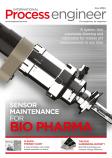As an inexpensive component, it would be easy to assume that failure of a hydraulic hose should not have serious consequences. That is, however, far from the case.
Resulting financial losses can be considerable but over and above that, from a health and safety point of view, the impact can be quite catastrophic.
Hydraulic systems can contain up to 2,000 litres of oil carried through pipes and hoses and pressures exceeding 100 or even 200 bar, and frequently at very high temperatures. So if a pinprick hole or small area of wear caused a leak, what could happen?
Even a hole measured in millimetres can quickly compromise the integrity of the whole system and in fact, the entire quantity of oil can drain out of a damaged hose within just 20 minutes.
Simply replacing that quantity of oil could cost in excess of £1,000 and it may not be a straightforward process as few lubricant suppliers keep large volumes in stock.
On top of that, there is the associated downtime, cost of clear-up and even the threat of environmental fines should oil escape down drains. But what if someone happens to be standing beside – or over – the hose when it fails?
Although the financial consequences could be considerable, the cost in human terms could be even greater. While many modern hydraulic systems sit within a bund to collect waste oil, bursts can be unpredictable; the oil may spurt out at an angle missing the bund altogether and, if a worker is within its trajectory, life-changing injuries could result.
To put the level of threat in perspective, a guidance document1 produced by the British Fluid Power Association states that any fluid injection injury - that is an injury in which the skin has been penetrated - must be treated as a medical emergency.
Fluid injection injuries typically involve pressures in excess of 6.9 bar (100psi) punching a hole in the skin and soft tissue with fluid from the damaged hose being injected into the body.
Depending on the entry pressure, the injected fluid can travel a significant distance from the initial site, resulting in more widespread tissue damage.
The results of high pressure injection of a fluid such as oil can be deceptive, with the injury often being worse than it initially appears. Anyone injured, or with a suspected penetration injury, should therefore be referred immediately to the A&E department of a hospital and, if the injury is to the hand or lower arm, preferably a hospital with a hand trauma unit as surgery is often required.
The severity of the injury will depend on a number of factors, including the type and amount of material injected, but hands are particularly vulnerable. In some cases where toxicity causes greater tissue damage, amputation may be required. Grease and oil may cause no reaction for the first two days, but then lead to extensive fibrosis and tissue damage and, because the body cannot break down the free oil that has entered, the treatment for this kind of injury is extensive. The more viscous the injected fluid, the greater the volume of tissue that will be affected but even injected water carries risk of complications due to fungal or chemical contamination.
Run-to-failure is unacceptable
The clearest lesson we can learn from this is that a run-to-failure policy for hydraulic hoses is never acceptable.
There are ways of predicting failure, either by calculating usage, using monitoring tools or employing visual checks.
Most hoses will last for around a million cycles, so by analysing the run time of a piece of machinery, the average lifespan of the hose should be easily calculated. Monitoring systems, often based on RFID or infrared technology, offer a high degree of reliability and can account for any unpredictable wear and tear caused by misuse.
Without monitoring technology, best practice is to combine usage calculations with visual checks – and it is essential that before any inspection is carried out, the hydraulic power pack should be shut off and de-pressurised.
The symptoms of damage must be assessed by an individual who understands the cause and effect – for example, if any of the metal braid is visible or if any rubber is visible through the braid, the hose should be changed immediately.
Other tell-tale signs of damage are blistering or swelling of the outer casing, which would indicate that the inner metal braid is damaged and oil is seeping through.
Another cause of blistering could be incompatibility between the hydraulic fluid and the hose materials, again pointing to replacement.
When replacing a hose, it is also important to remember that hoses have a shelf life, so replacements should be checked for their ‘best before’ date and to make sure that they have been professionally swaged to ensure components have not been changed or replaced.
Personnel most at risk of injury are, of course, those who work around hydraulic pressure equipment but, in the event of a hose failure, it could simply be a case of someone being in the wrong place at the wrong time. Burst hoses pose significant health and safety risks so a regular inspection policy is an essential safety requirement – as is an awareness of the implications should an accident occur. Brammer’s fluid power solutions team has extensive experience in the inspection, design and repair of hydraulic hose assemblies.
Terry Davis is national technical manager at Brammer.
References: 1. Fluid Injection Injury Emergency, published by the BFPA


















